
Mormons are a religious and cultural group related to Mormonism, the principal branch of the Latter Day Saint movement started by Joseph Smith in upstate New York during the 1820s. After Smith's death in 1844, the movement split into several groups following different leaders; the majority followed Brigham Young, while smaller groups followed Joseph Smith III, Sidney Rigdon, and James Strang. Most of these smaller groups eventually merged into the Community of Christ, and the term Mormon typically refers to members of the Church of Jesus Christ of Latter-day Saints, as today, this branch is far larger than all the others combined. People who identify as Mormons may also be independently religious, secular, and non-practicing or belong to other denominations. Since 2018, the LDS Church has emphasized a desire for its members be referred to as "members of The Church of Jesus Christ of Latter-day Saints", or more simply as "Latter-day Saints".

Leonard James Arrington was an American author, academic and the founder of the Mormon History Association. He is known as the "Dean of Mormon History" and "the Father of Mormon History" because of his many influential contributions to the field. Since 1842, he was the first non-general authority Church Historian for the Church of Jesus Christ of Latter-day Saints, from 1972 to 1982, and was director of the Joseph Fielding Smith Institute for Church History from 1982 until 1986.

The Encyclopedia of Mormonism is a semi-official English-language encyclopedia for topics relevant to the Church of Jesus Christ of Latter-day Saints. The encyclopedia's five volumes have been digitized and are available for free online via the Harold B. Lee Library's official website.
Historians of the Latter Day Saint movement are a diverse group of historians writing about Mormonism. Historians devoted to the history of the Latter Day Saint movement may be members of a Latter Day Saint faith or non-members with an academic interest. They range from faith-promoting historians to anti-Mormon historians, but also include scholars who make an honest effort at objectivity.
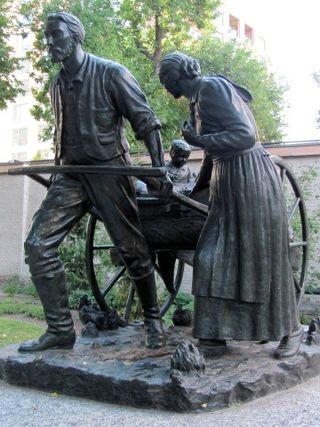
The Mormon religion is predicated on what are said to be historical events such as the First Vision of Joseph Smith and the historicity of the Book of Mormon, which describes a detailed pre-Columbian history of the Americas. Joseph Fielding Smith, the tenth president of the Church of Jesus Christ of Latter-day Saints, declared that "Mormonism, as it is called, must stand or fall on the story of Joseph Smith. He was either a prophet of God, divinely called, properly appointed and commissioned, or he was one of the biggest frauds this world has ever seen. There is no middle ground." As Jan Shipps has written, "Mormonism, unlike other modern religions, is a faith cast in the form of history," and until after World War II, Mormons did not critically examine the historical underpinnings of their faith; any "profane" investigation of the church's history was perceived "as trespassing on forbidden ground."

Jo Ann Barnett Shipps, known as Jan Shipps, is an American historian specializing in Mormon history, particularly in the latter half of the 20th century to the present. Shipps is generally regarded as the foremost non-Mormon scholar of the Latter Day Saint movement, having given particular attention to the Church of Jesus Christ of Latter-day Saints. Her first book on the subject was Mormonism: The Story of a New Religious Tradition published by the University of Illinois Press. In 2000, the University of Illinois Press published her book Sojourner in the Promised Land: Forty Years Among the Mormons, in which she interweaves her own history of Mormon-watching with 16 essays on Mormon history and culture.

No Man Knows My History: The Life of Joseph Smith is a 1945 book by Fawn M. Brodie that was one of the first significant non-hagiographic biographies of Joseph Smith, the progenitor of the Latter Day Saint movement. No Man Knows My History was influential in the development of Mormon history as a scholarly field. However, scholars have since criticized the book for its methodological deficiencies, factual errors, and overt hostility to Smith.
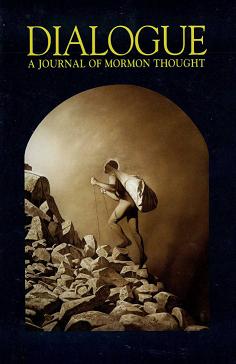
Dialogue: A Journal of Mormon Thought is an independent quarterly journal that addresses a wide range of issues on Mormonism and the Latter Day Saint Movement.
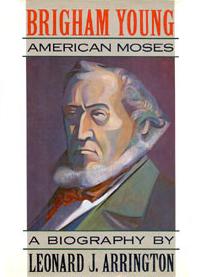
Brigham Young: American Moses is a biography written by Leonard J. Arrington about Brigham Young, a leader in the Latter Day Saint movement and the second president of the Church of Jesus Christ of Latter-day Saints. Alfred A. Knopf published the book in 1985, and reviewers and historians have called it "the definitive Mormon history" and "necessary reading" for understanding Young's life and character.
Dean Cornell Jessee is a historian of the early Latter Day Saint movement and leading expert on the writings of Joseph Smith Jr.
Claudia Marian Lauper Bushman is an American historian specializing in domestic women's history, especially as it relates to the history of the Church of Jesus Christ of Latter-day Saints. She helped found, and was the first editor of, the progressive LDS magazine Exponent II, has written American and LDS history books, and established a Mormon women oral history project at Claremont Graduate University.
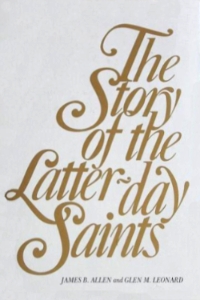
The Story of the Latter-day Saints is a single-volume history of the Church of Jesus Christ of Latter-day Saints by James B. Allen and Glen M. Leonard, first published in 1976.

No, Ma'am, That's Not History is a short work written by Hugh Nibley to criticize Fawn M. Brodie's biography of Joseph Smith, No Man Knows My History. Nibley accuses Brodie of inconsistency and improper historical methodology. Scholars have criticized No, Ma'am for using the same kind of hyperbole that Nibley critiques in Brodie. Nibley's defenders explain that his acerbic satire does use similar rhetorical tools as Brodie does, which is part of its attention-grabbing intent. In 1999, The Salt Lake Tribune said the book "was wildly popular in Utah".
Mormon studies is the interdisciplinary academic study of the beliefs, practices, history and culture of individuals and denominations belonging to the Latter Day Saint movement, a religious movement associated with the Book of Mormon, though not all churches and members of the Latter Day Saint movement identify with the terms Mormon or Mormonism. Denominations of the Latter Day Saint movement include the Church of Jesus Christ of Latter-day Saints, by far the largest, as well as the Community of Christ (CoC) and other smaller groups, include some categorized under the umbrella term Mormon fundamentalism.

Joseph Smith Jr. was an American religious leader and the founder of Mormonism and the Latter Day Saint movement. Publishing the Book of Mormon at the age of 24, Smith attracted tens of thousands of followers by the time of his death fourteen years later. The religion he founded is followed to the present day by millions of global adherents and several churches, the largest of which is the Church of Jesus Christ of Latter-day Saints.
Patrick Q. Mason is an American historian specializing in the study of the Latter-day Saint movement. Since 2019, he has held the Leonard J. Arrington Chair of Mormon History and Culture at Utah State University.

The John Whitmer Historical Association (JWHA) is an independent, nonprofit organization promoting study, research, and publishing about the history and culture of the Latter Day Saint movement. It is especially focused on the Community of Christ, other midwestern Restoration traditions, and early Mormonism. The Community of Christ's approach to its own history was influenced, in part, by historical problems raised and explored through JWHA publications and conferences, and those of its sister organization, the Mormon History Association. JWHA membership numbers around 400 and is open to all, fostering cooperation with LDS and non-Mormon scholars.
This is a bibliography of works on the Latter Day Saint movement.
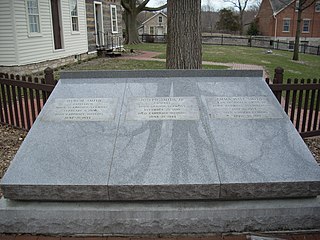
The legacy of Joseph Smith includes the immediate aftermath of Smith's killing, among various competing denominations, the status of his family and the church he founded, and a scholarly assessment of his life and religion. Although Smith was killed in 1844, he attracted thousands of devoted followers before his death, and millions in the century that followed. Among Mormons, he is generally regarded as a prophet on par with Moses and Elijah. In a 2015 compilation of the 100 Most Significant Americans of All Time, Smithsonian magazine ranked Smith first in the category of religious figures.













